Egyptian art has a long history of featuring cats. A culture, offering a diverse range of depictions from the grim to even humorous. Among the mummies and grand statues that pay homage to these feline companions, there are unique portrayals that offer us a glimpse into the multifaceted role of cats in ancient society.
Feline fine art II – Predynastic Period (until 3000 BCE)
Our journey through the ancient depiction of cats begins with an artifact from the Predynastic period. Even than, cats had been a part of domestic life for thousands of years. But it is the lion that often takes center stage. At around 3100 BCE, the Battlefield Palette showcases this wild relative of a cat, the lion. It emphasizes the prestige and power of these creatures held in the eyes of the ancient Egyptians.
Battlefield palette (ca. 3100 BCE)
The Battlefield Palette is one of the earliest known depictions of a battle from ancient Egypt. It was likely commissioned by a regional ruler before Egypt’s unification to enhance their influence. Intended for early power rituals, it portrays the aftermath of a battle. It shows a lion attacking a prisoner and vultures assaulting bound figures.
This artifact features scenes in low relief and a specific area for mixing ceremonial substances. Probably intended as an early form of hieroglyphic representation. Made of grey mudstone during the Naqada III period (circa 3150 – 3000 BC), the palette’s significance grew from a cosmetic tool to a ceremonial item. It is displayed at the Ashmolean Museum in Oxford.1
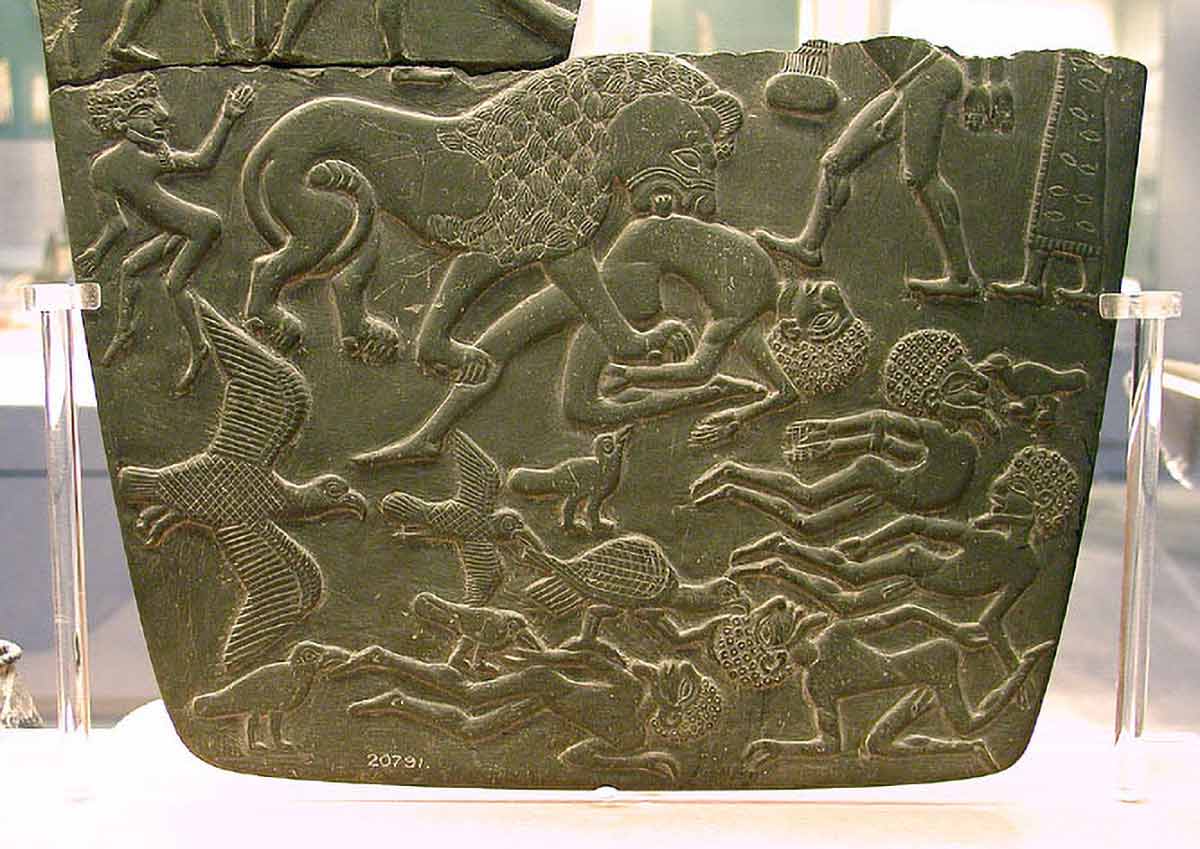
Feline fine art II – Early Dynastic Period (3000 – 2675 BCE)
Lion cub (3100 – 2900 BCE)
You’re looking at a lion cub figure of almost magical 5,000 year old beauty! Carved of Quartz, what is very difficult to work with without cracking, the artisan must have great skills. Especially at this scale as the item is only about 9 inches long. Its shimmering material lends it a special beauty. It was found in a temple of the goddess Hathor which seems unusual at first as she is usually depicted as a cow. But in one legend, she was born with the face of a lioness. This makes it possible that we are looking at a depicting of her young son.2
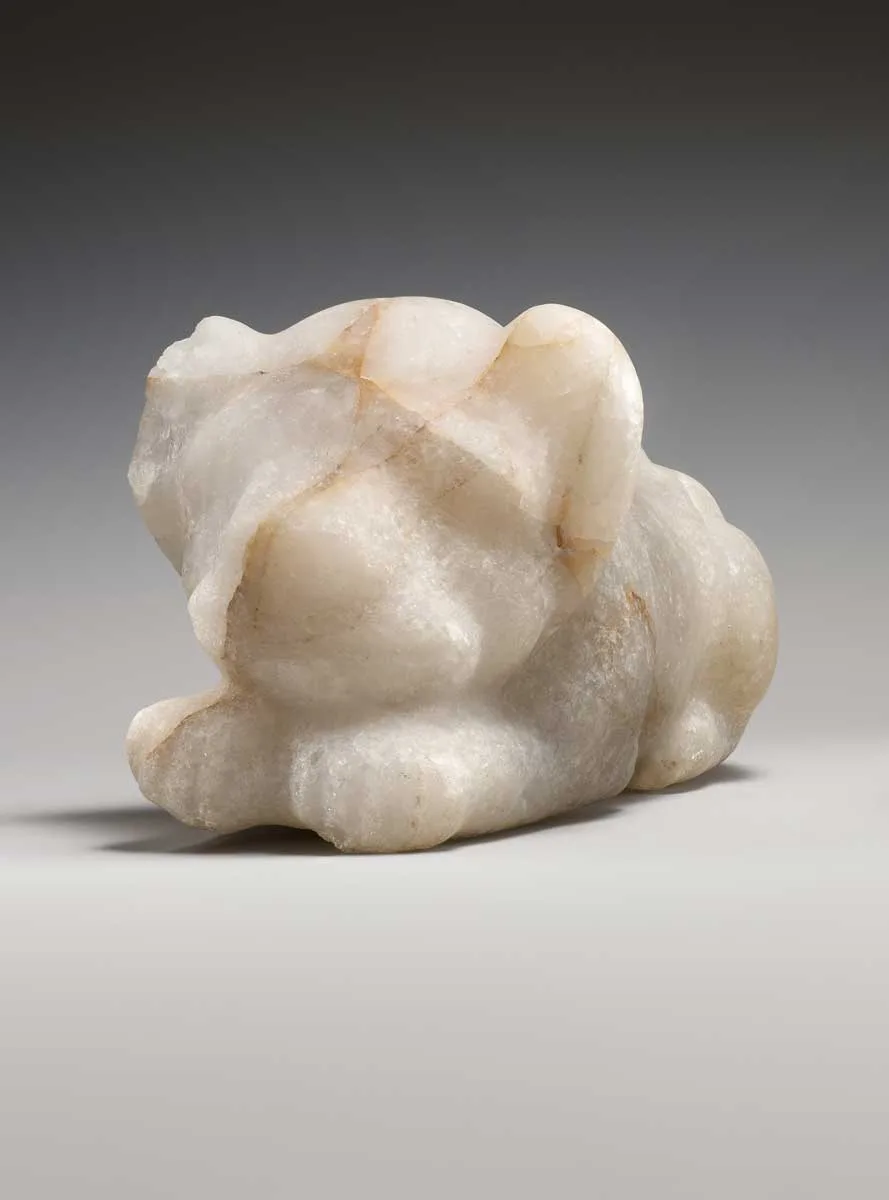
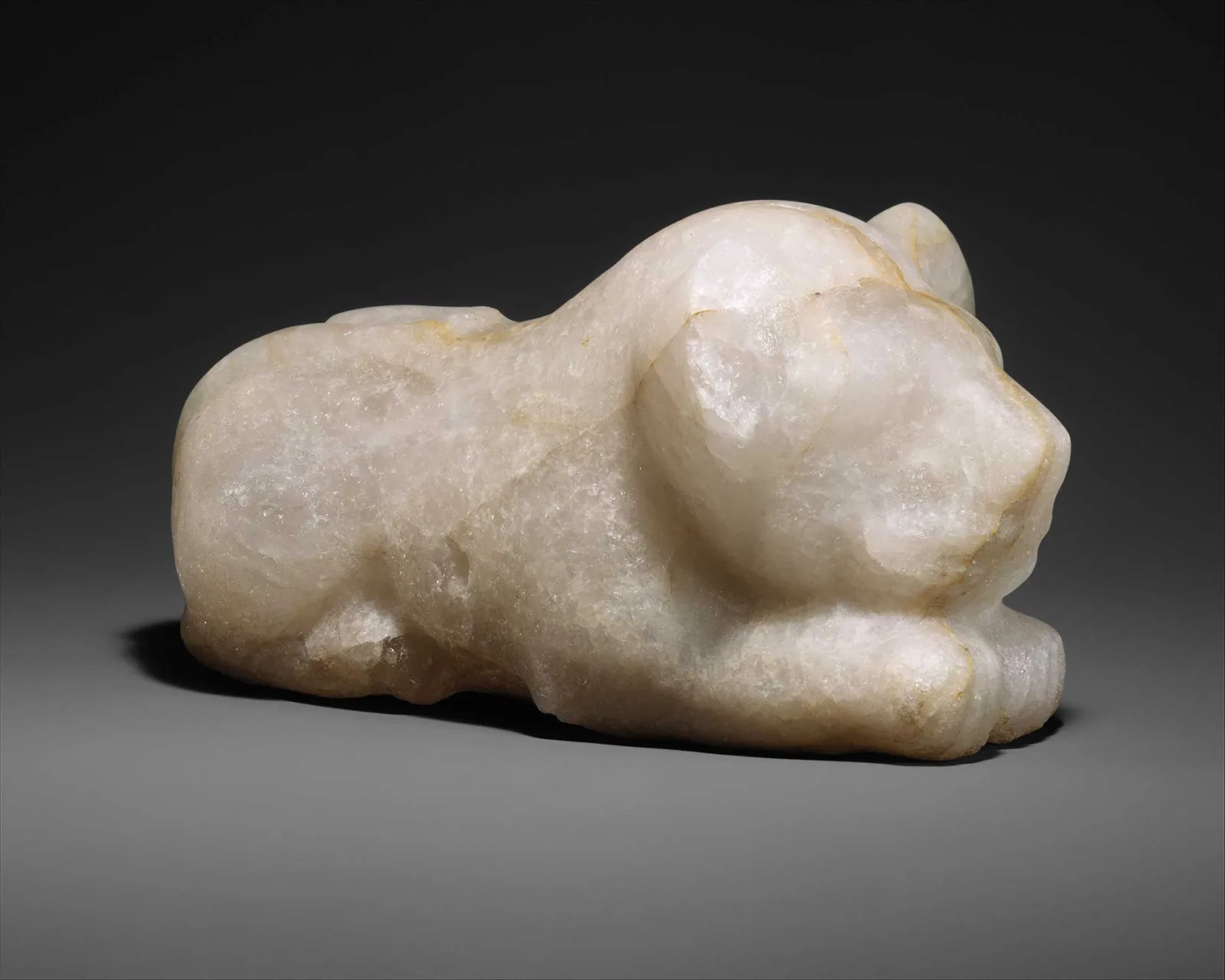
Feline fine art II – Old Kingdom (2675 – 2130 BCE)
Statuette of a lion (ca. 2250 BCE)
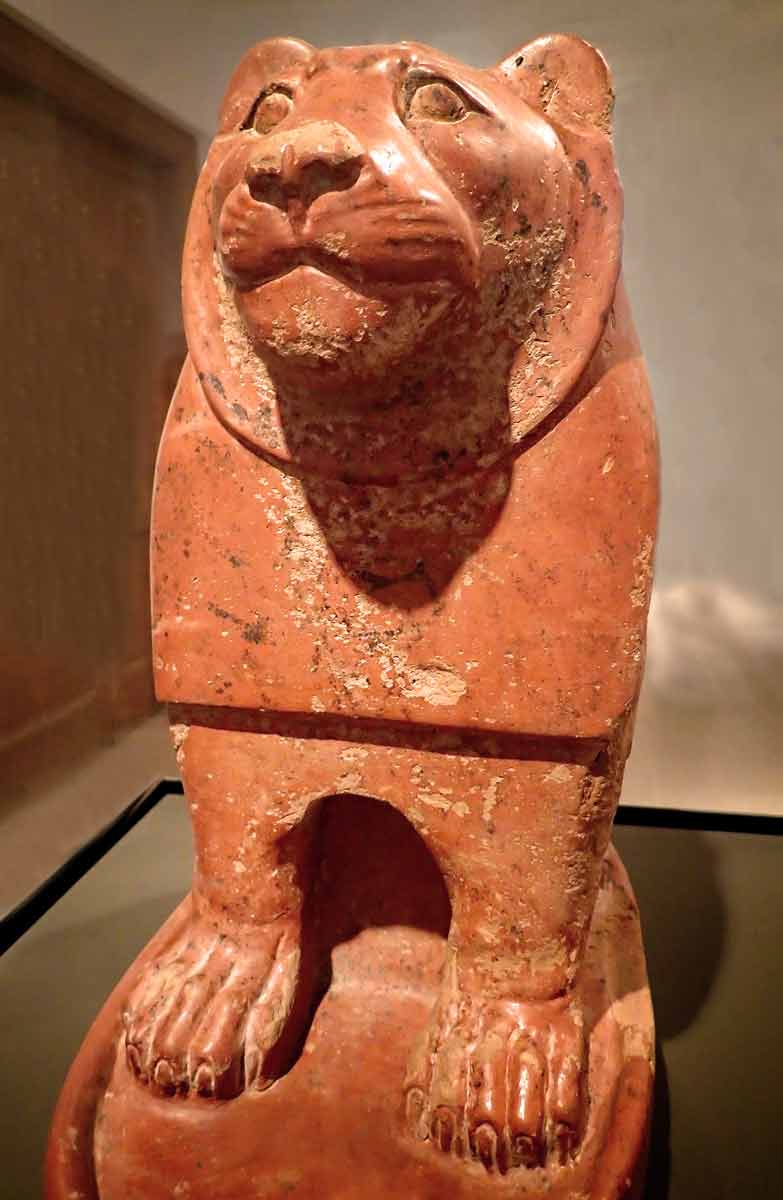
This ancient red statuette from around 2250 BCE is made from Terracotta and about 16.7 inches high. It depicts a lion with a distinctive, small mane across its chest. But researchers speculate about its significance. Some suggest the mane symbolizes royalty. Akin to the lappets on a pharaoh’s headcloth, potentially linking the lion to kingly power. Others argue it represents a real lion’s mane from a time when there were still lions around Egypt. Changing climates led to lions with smaller manes, marking an adaptation to warmer weather. This piece was found in the Hierakonpolis tomb.3,4
Feline fine art II – Middle Kingdom (1980 – 1630 BCE)
Cosmetic vessel in the shape of a cat (1990 – 1900 BCE)
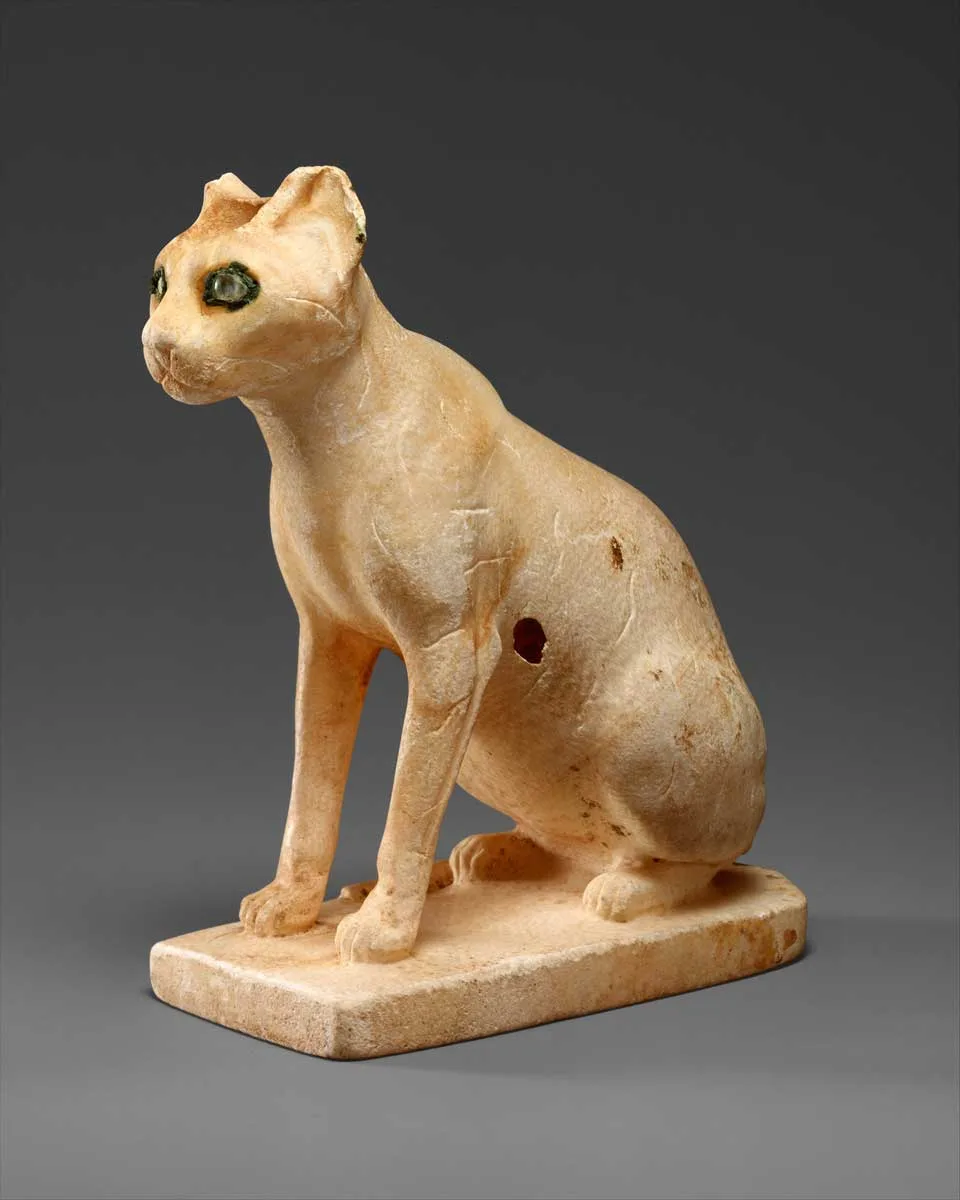
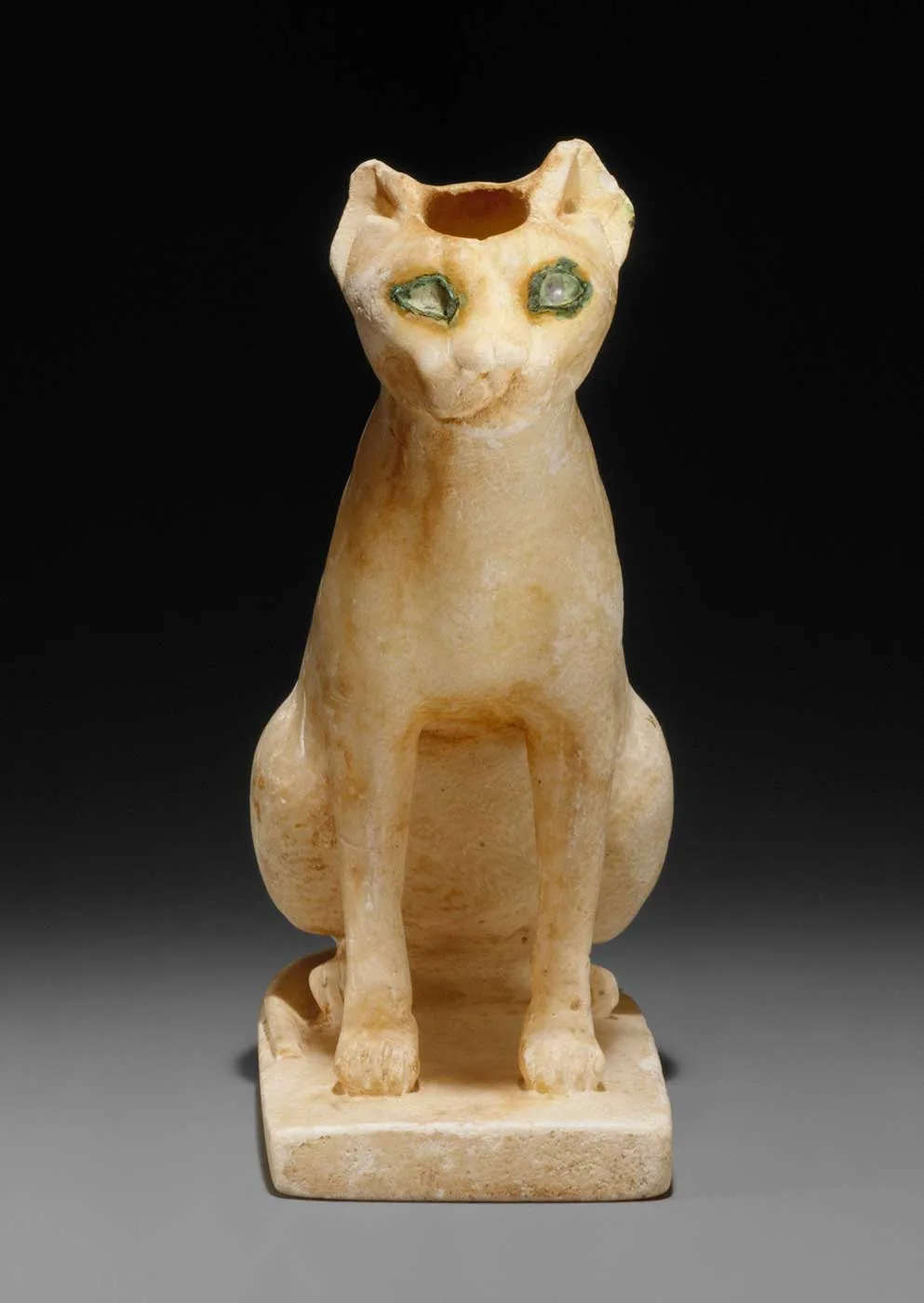
This cosmetic jar, shaped like a cat, is the earliest known three-dimensional representation of the animal in Egyptian art. Crafted from travertine, commonly known as Egyptian alabaster, the jar features intricate detailing with rock-crystal eyes outlined in copper, which lend the figure a vivid expression. This portrayal contrasts with the more composed and detached depictions that emerged in later periods. The sculptor’s acute observation of the cat’s physical attributes is evident, capturing its tense and attentive demeanor. The jar measures approximately 5.5 inches cm in height.5
Feline fine art II – New Kingdom (1539 – 1075 BCE)
Sacrophagus of Prince Thutmose’s cat (1539 – 1292 BCE)
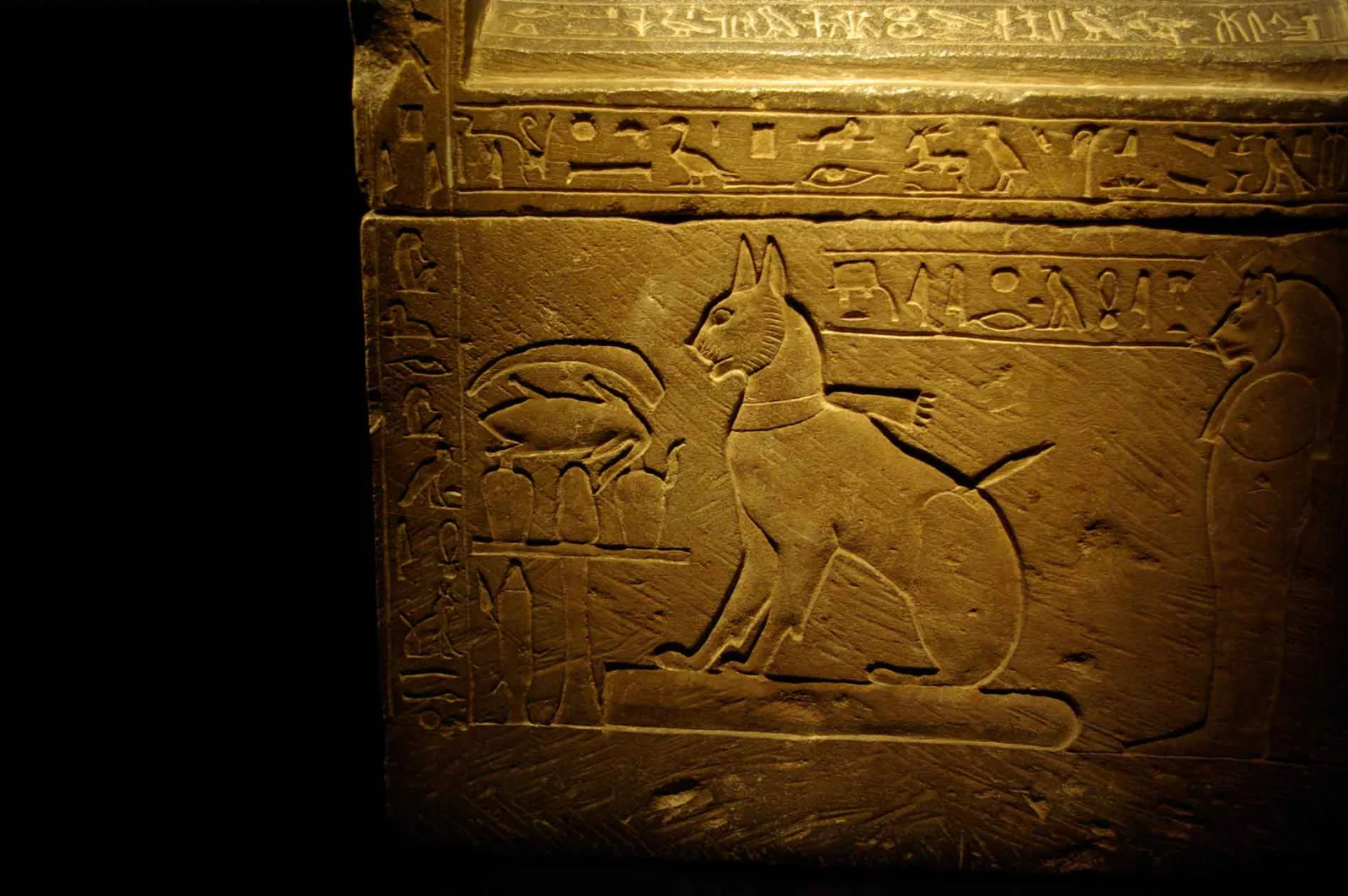
Thutmoses ensured that his beloved cat received only the finest in her afterlife. Her sarcophagus, crafted from limestone, was adorned with images of a lavish banquet, including three pints of wine, a goose, and an ox leg. Additionally other depictions showcased other delectable items, creating a sumptuous visual feast fitting for his cherished companion. Read more about Ta-Miu’s interesting fate on our article about history’s most famous cats.
Tomb of Nebamun, hunting scene (1400 – 1350 BCE, Thebes)
Ancient Egyptian art is well-known for its murals, reliefs, and architectural decorations, but there aren’t standalone paintings like those of Renaissance artists from the common folk. Certainly the majority of well-preserved art from tombs, temples, and palaces, were commissioned by the elite or royal patrons.
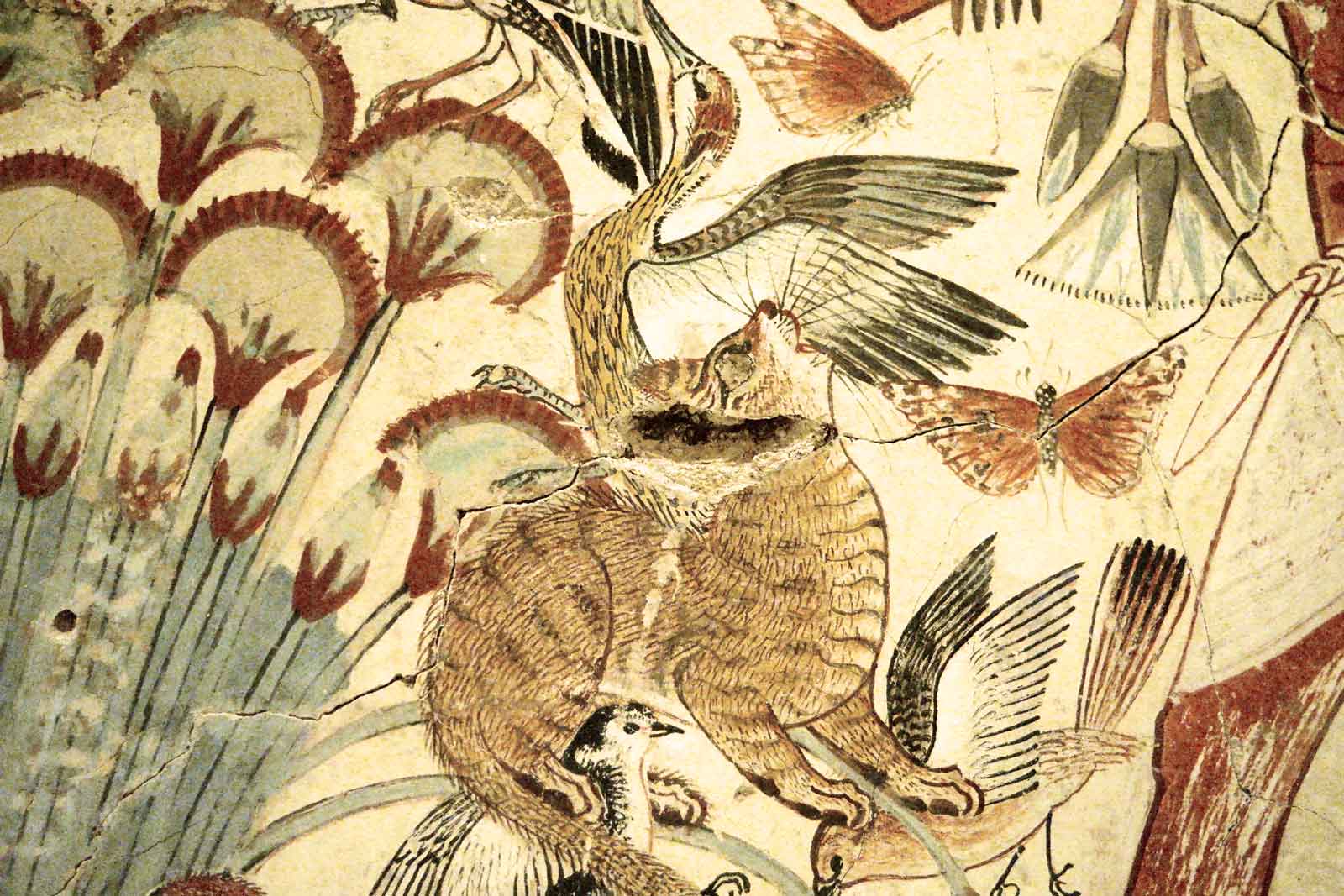
One of the tombs that actually shows scenes of various aspects of society outside of palaces and temples, is the tomb of Nebamun in Thebes. Obviously Nebamun was a scribe and not a common laborer, and wall paintings seemingly provide glimpses into the daily activities of regular people. In this mural, a cat assists him in hunting. Especially its golden eye and a successful hunt might symbolize Nebamun being blessed by the sun-god Ra. Specifically emphasizing the divine protection and celestial connection for his afterlife.
[Cat statues] engraved with the scarab and wedjat eye represent Bastet.
Sekhmet & Bastet – The Feline Powers of Egypt
Ostracon cat and mouse (1295 – 1075 BCE)
This limestone piece shows a humorous scene inked onto its surface, where a cat stands upright, fanning and offering a duck or goose to a mouse seated like royalty on a decorative stool. The mouse, wearing a long skirt and with a flower on her head, holds a dish in one hand and in the other, a fish bone or flower and a piece of cloth – items often seen with pharaohs, hinting at a playful nod to royalty.
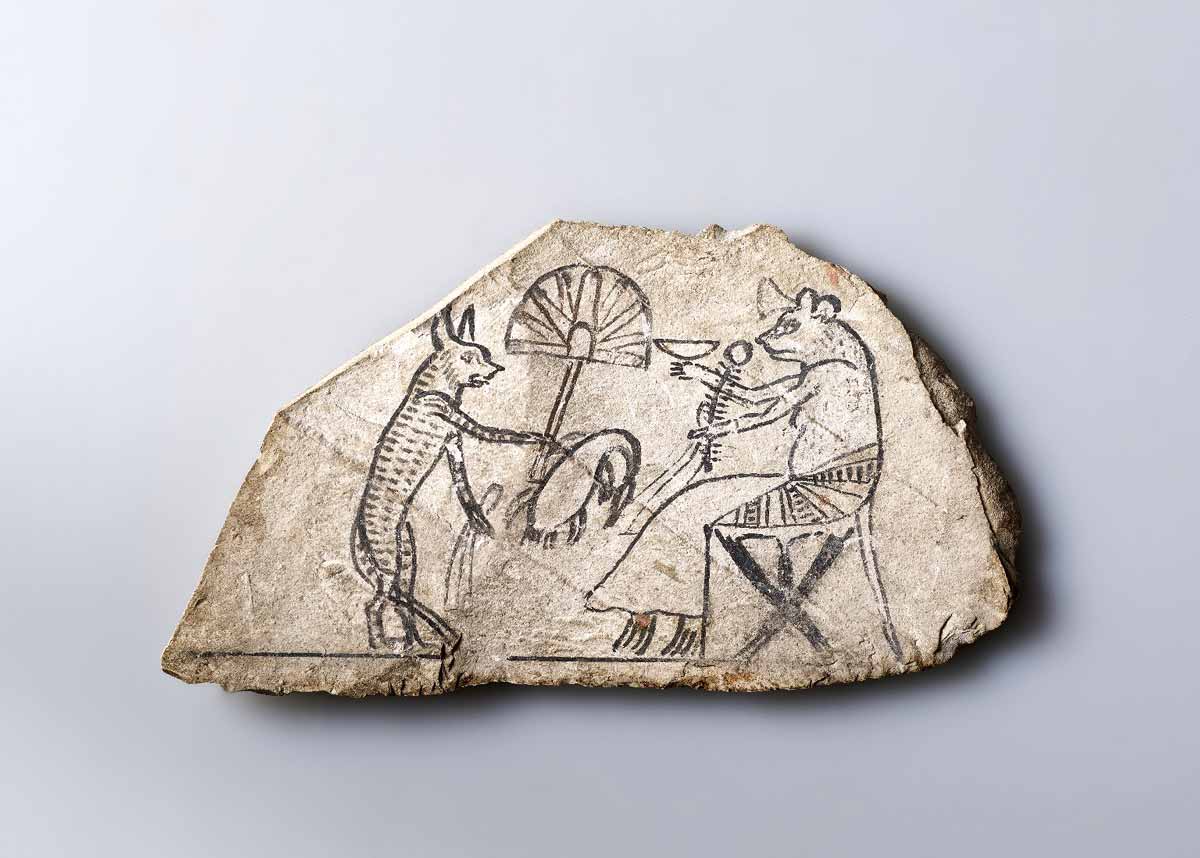
This ostracon could be seen as a lighthearted satire or perhaps an illustration of a tale now lost to us, subtly poking fun at societal or royal norms by reversing the roles of predator and prey. Despite some wear, its condition remains good, making it a captivating snapshot of ancient Egyptian humor and creativity. This ostracon is one of several still existing today. We display just the few here, as there are numerous other pieces we want to show you, each completely unique.6
Ostracon with Pharaoh spearing a lion (1180 – 1070 BCE)
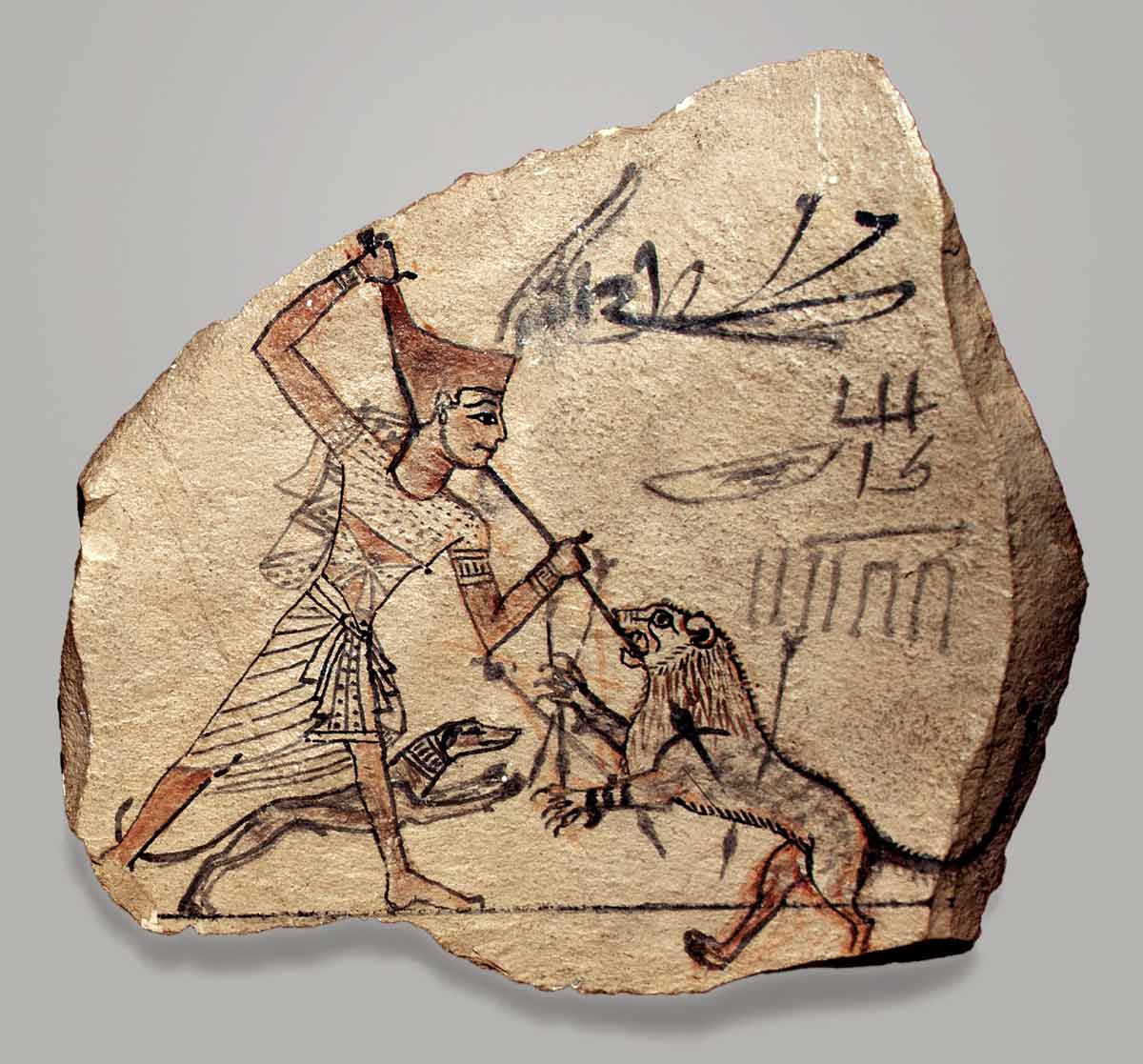
Contrary to the just witnessed humor, here you see a not yet identified pharaoh who’s ending the life of an enemy of egypt, represented by a lion. It contains a blessful saying as well.7
The slaughter of every foreign land, the Pharaoh – may he live, prosper, and be healthy.
– unknown artist
Feline fine art II – Third Intermediate Period (1075 – 656 BCE)
Ring with cat and kittens (ca. 980 BCE)
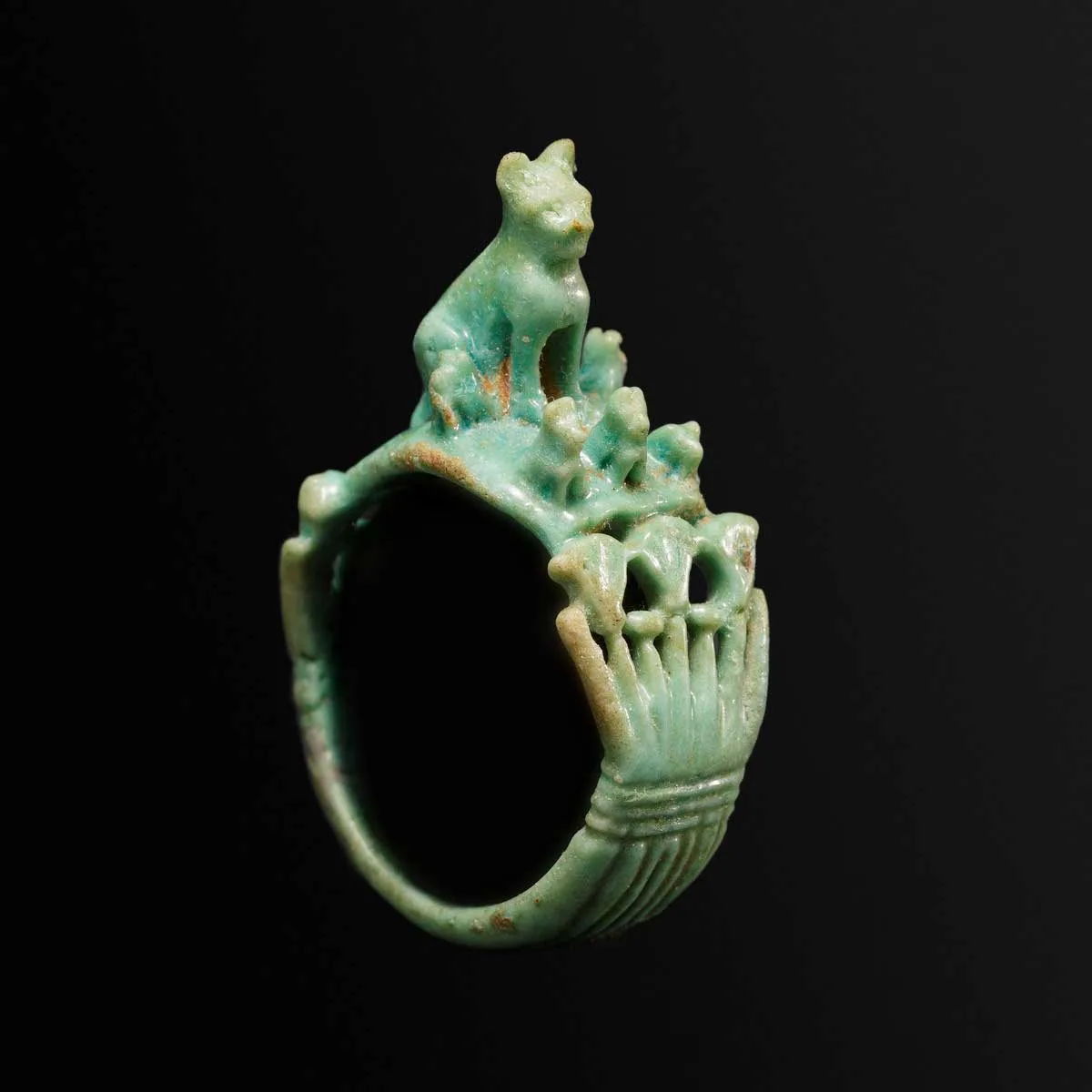
This striking ring from ancient Egypt’s Third Intermediate Period is made of faience, a glazed ceramic material renowned for its bright, glass-like finish and vibrant colors. Depicting a cat with its kittens next to papyrus plants – imagery of a marsh – it serves as a talisman of the Faraway Goddess myth. In the story, the goddess’ absence disrupts balance, and her return signifies the restoration of order. The intricate faience work, capturing the fine details of the mythological scene, reflects the period’s peak of artistic craftsmanship. Worn during festivals, this ring was a celebratory piece invoking the deities’ blessings and the harmony of maat, the principle of cosmic order.8
Feline fine art II – Late Period (664 – 332 BCE)
Gayer-Anderson cat
Sculptures like this primarily represent female cats and are most commonly associated with Bastet, a goddess whose worship dates back to the Old Kingdom (ca. 2675 – 2130 BCE). Initially lioness-headed and embodying the sun’s aggressive power, Bastet evolved to embody the gentler characteristics of domestic cats, such as fertility and protective nature. These bronze statuettes, therefore, not only represent the animal itself but also symbolize the protective and nurturing qualities attributed to the goddess Bastet.9
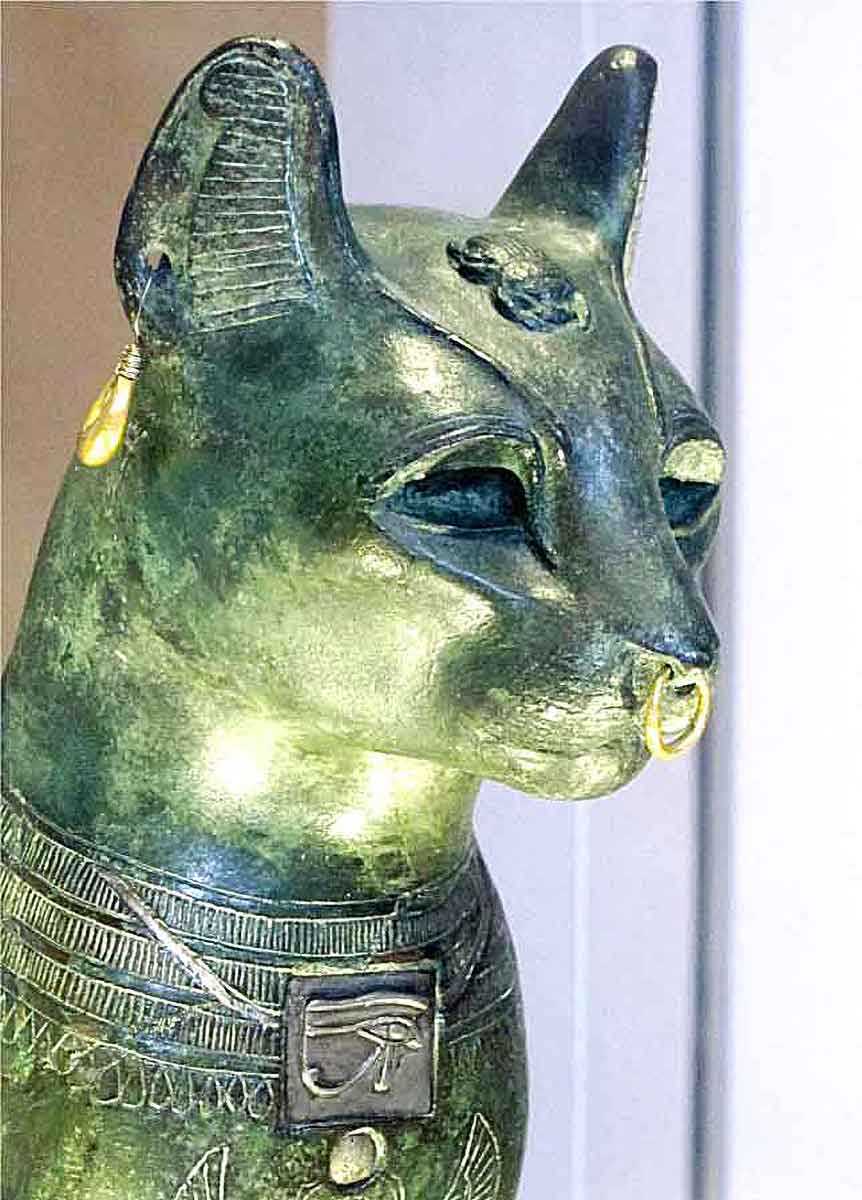
Some statues like this served as containers for mummified cats who were put into the tombs of their owners to give them companionship.10 The scarab beetles on her forehead and chest stand for rebirth while the Wedjat amulet is a sign of protection. Today very tiny versions of them are sold as souvenirs to tourists in Egypt.
Cat statuette as container for a mummified cat
As you can see, even this container for a mummified cat has a wadjet eye carved into the chest, symbolizing the goddess Bastet. Bronze containers like this and later on, containers of linen, would be donated to her temples at Bubastis and Saqqara (and other places).10
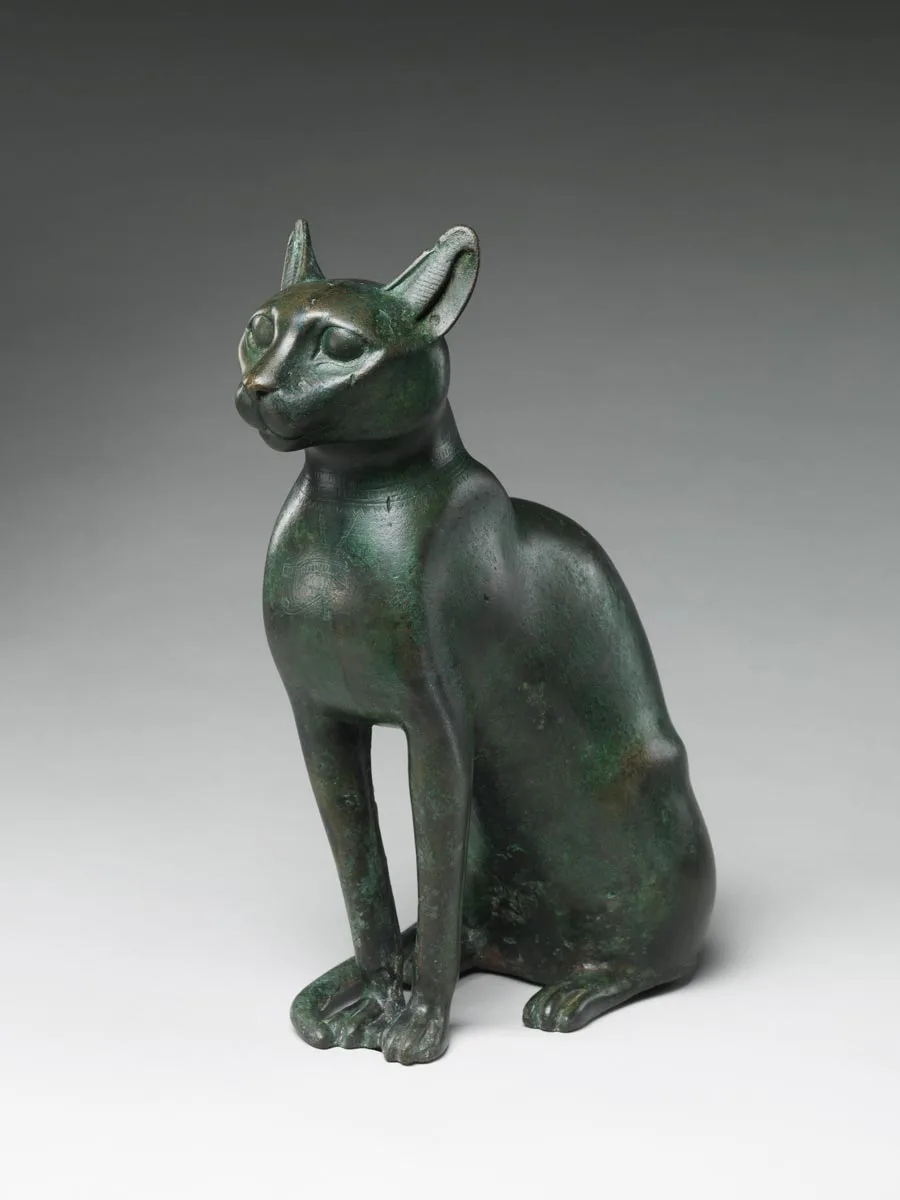
Cat bronze votive statue with kittens
This art piece is a bronze sculpture featuring a mother cat reclining with her four kittens on a semi-circular bronze base that fits into a wooden base. The mother cat is depicted in a relaxed pose with varied leg positions and a slightly tilted head, as one kitten climbs toward her neck and three others nurse. The sculpture is detailed with a necklace marked by a potential Wedjat pendant. Not only that but also the inscription on the base Bastet, given life leads us to the assumption that we’re looking at a Bastet figurine here.
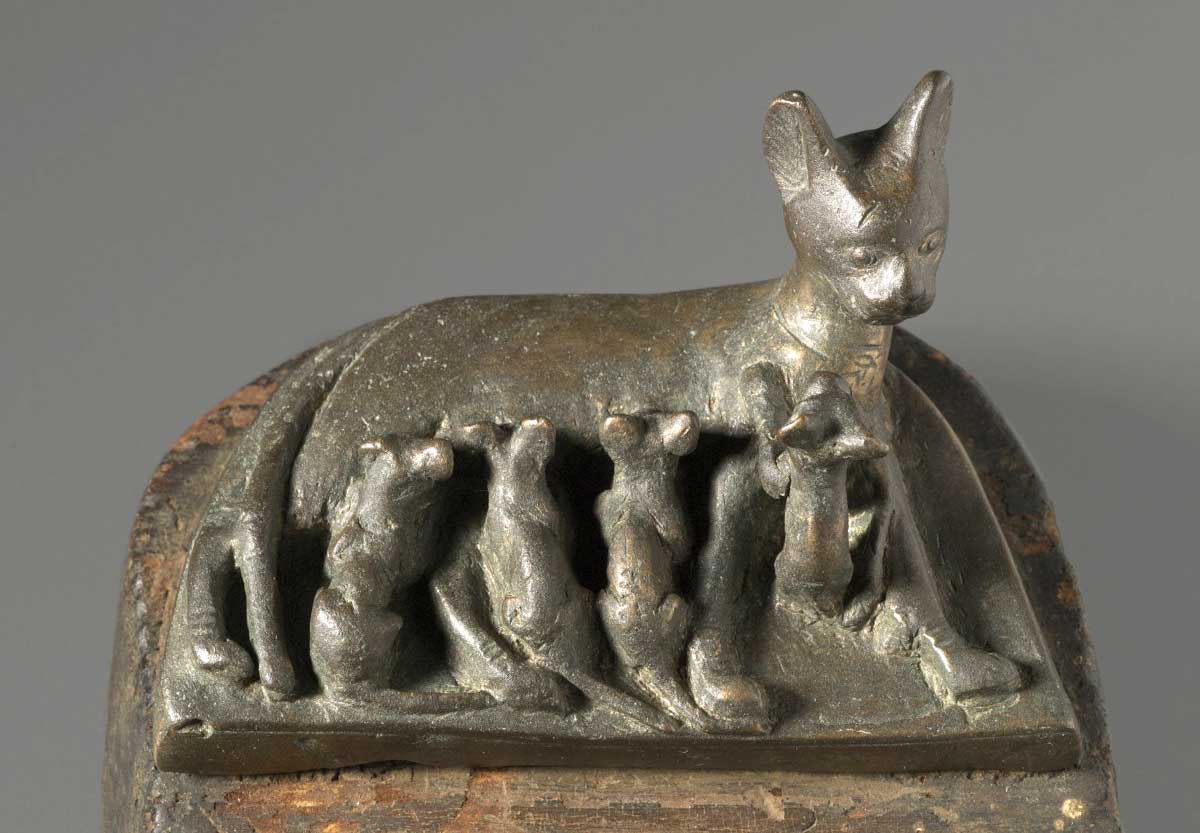
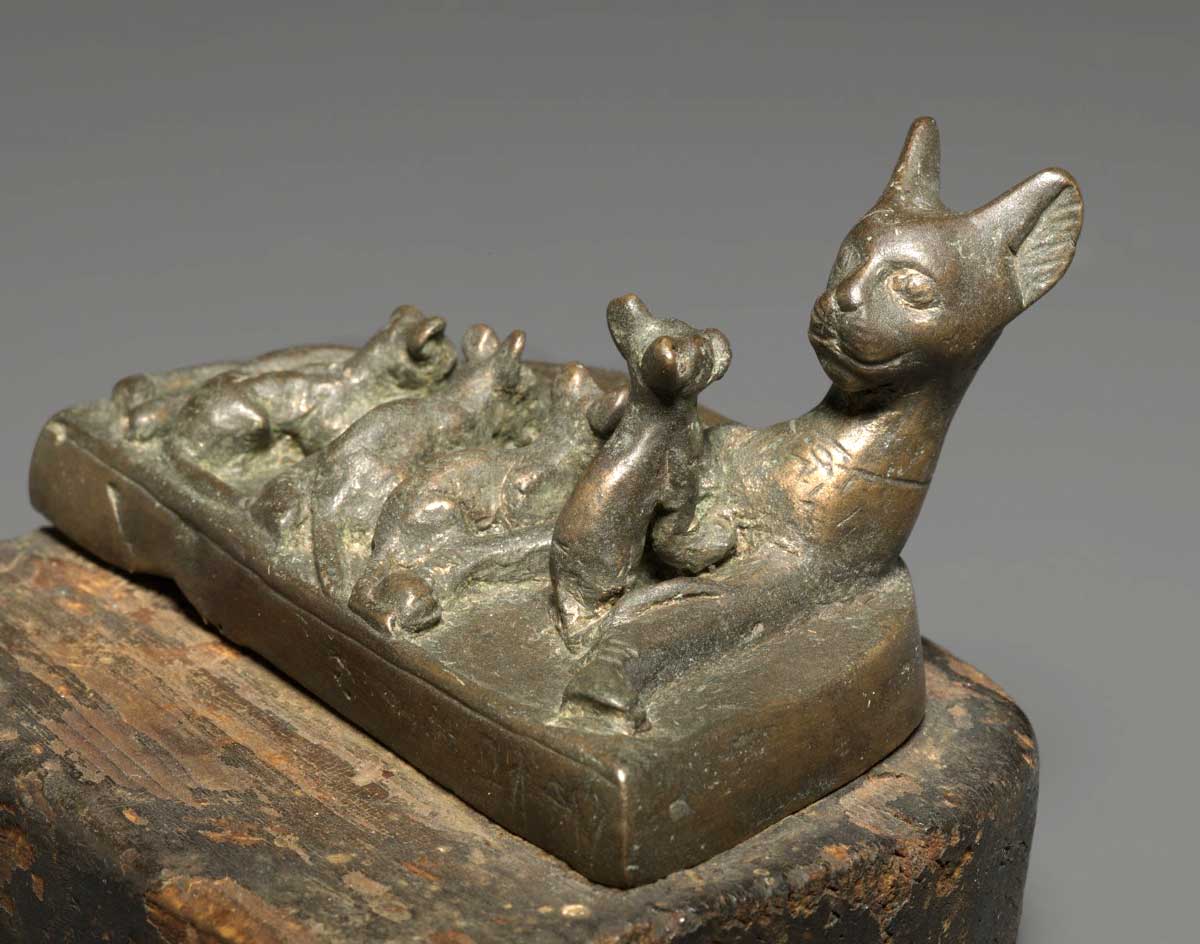
Though the bronze shows some light patches and minor scratches, it is generally well-preserved. The wooden base, originally black, shows some wear and loss of paint. This composition stands out due to its asymmetry, a notable deviation from the typical symmetry of three-dimensional Egyptian art, making this a truly unique piece of art.11
We hope you enjoyed this journey to ancient Egypt. Be assured, there are tons of fascinating cat art more, so let us know if you want another article like this in the comments. And if you find it interesting, share this one with your friends!
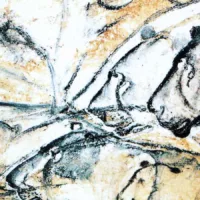
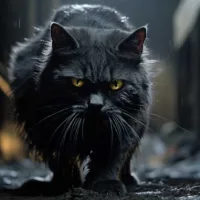
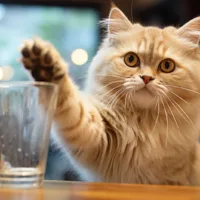

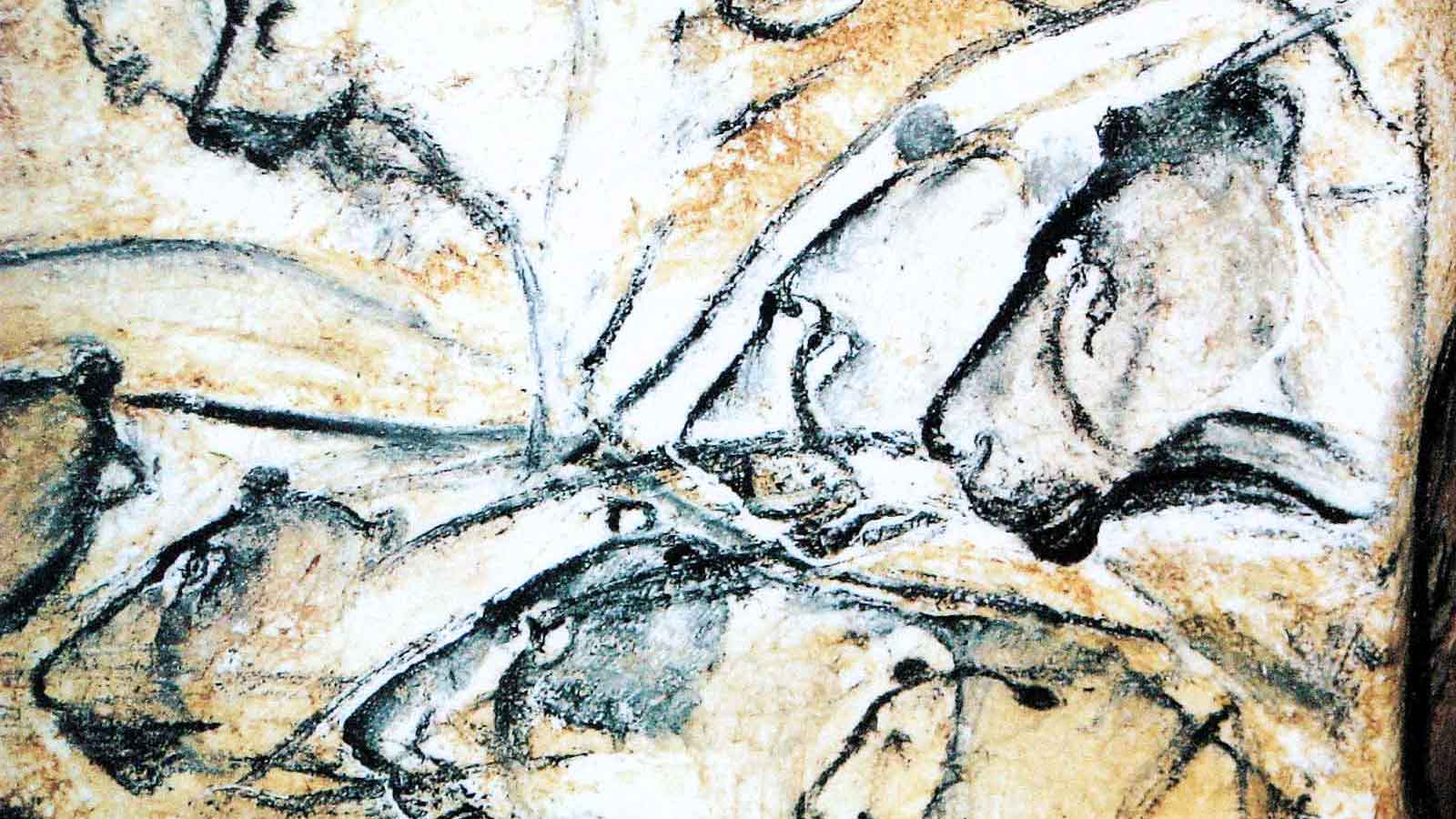
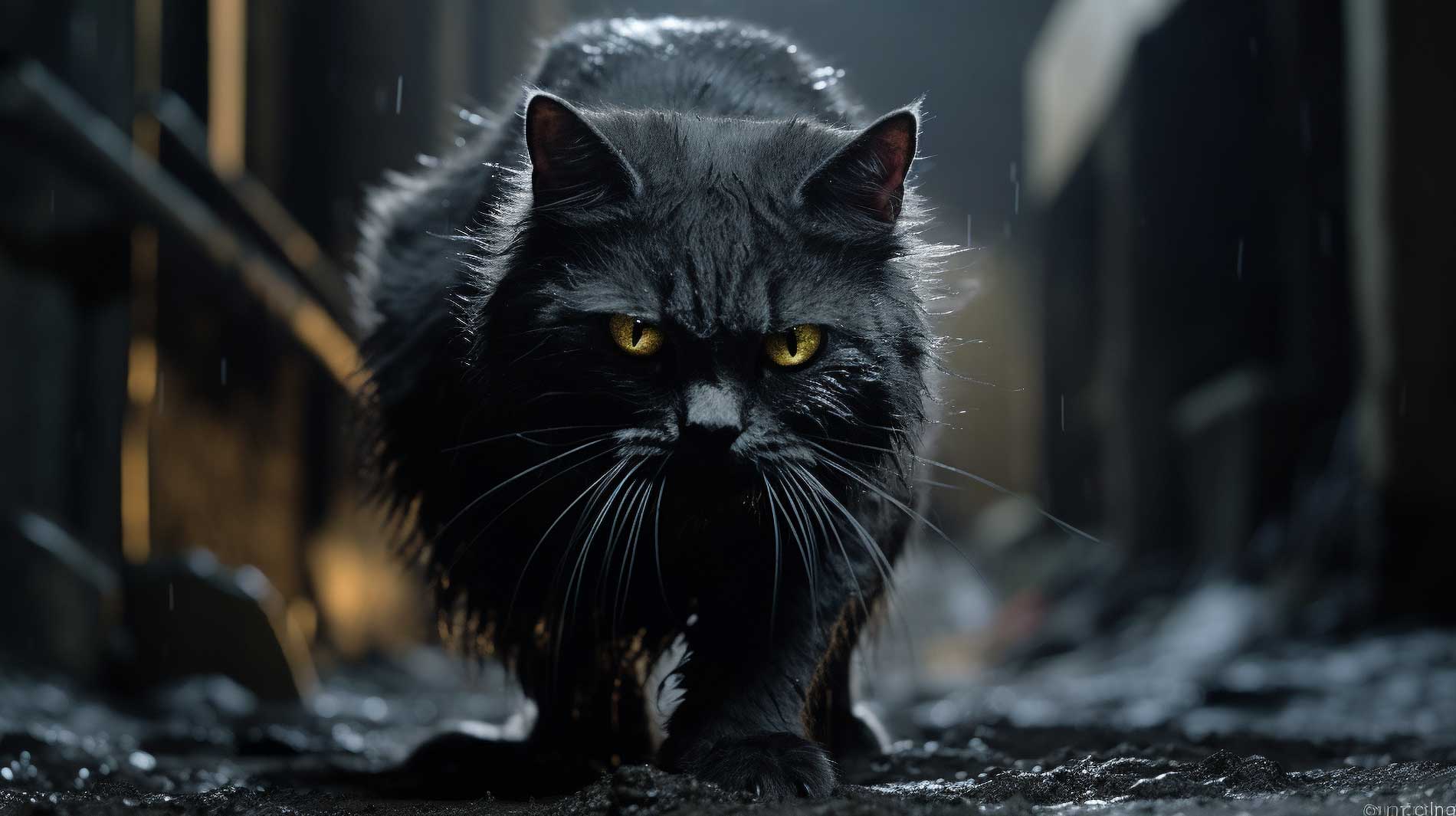
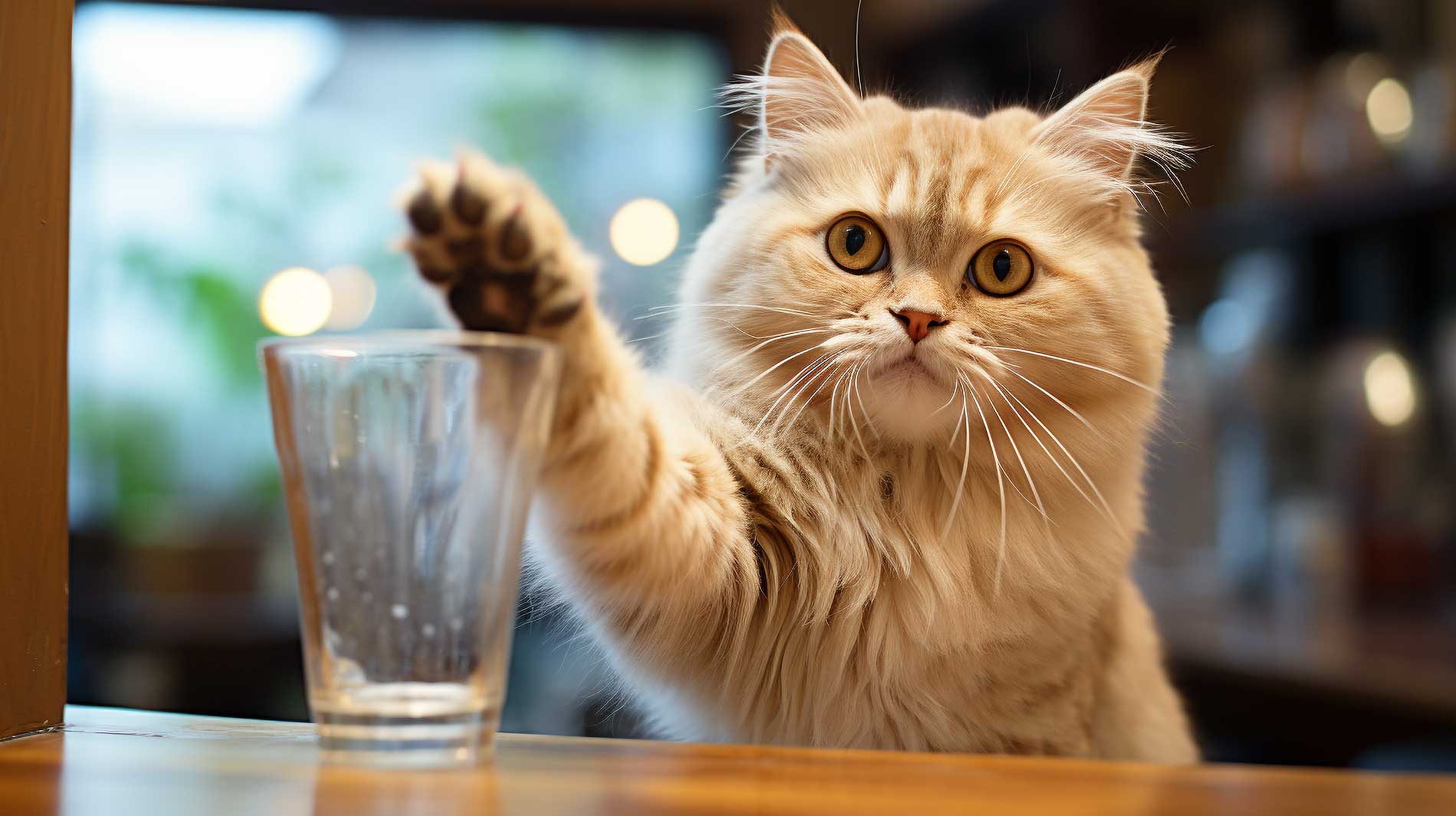
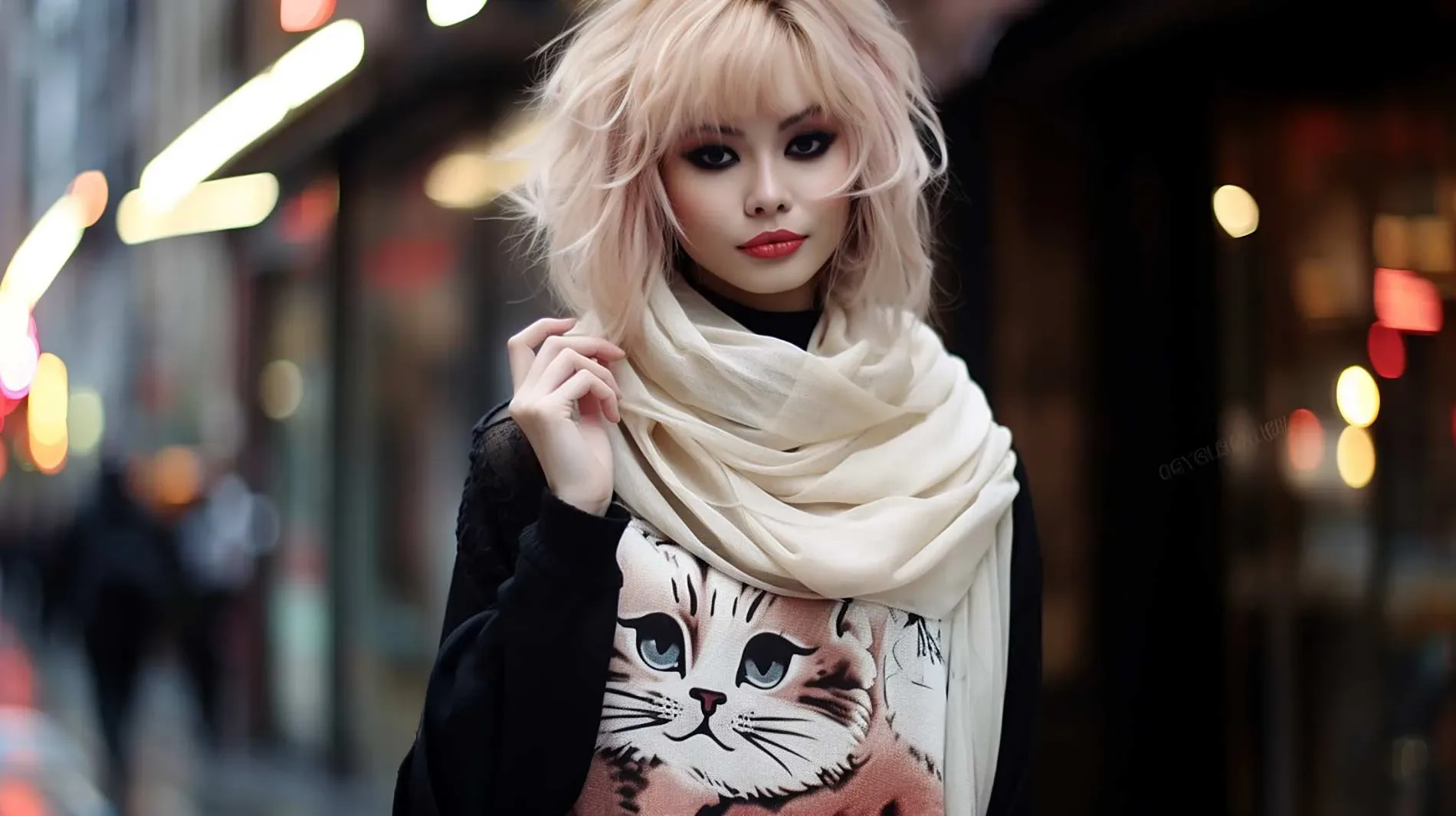
I think your take on Egyptian art and its connection to cats is so interesting! I love how you talk about both house cats and lions and how important they were in ancient times—that’s not something you hear about often. Your way of mixing history with art is really fun and easy to follow. Great work!
0